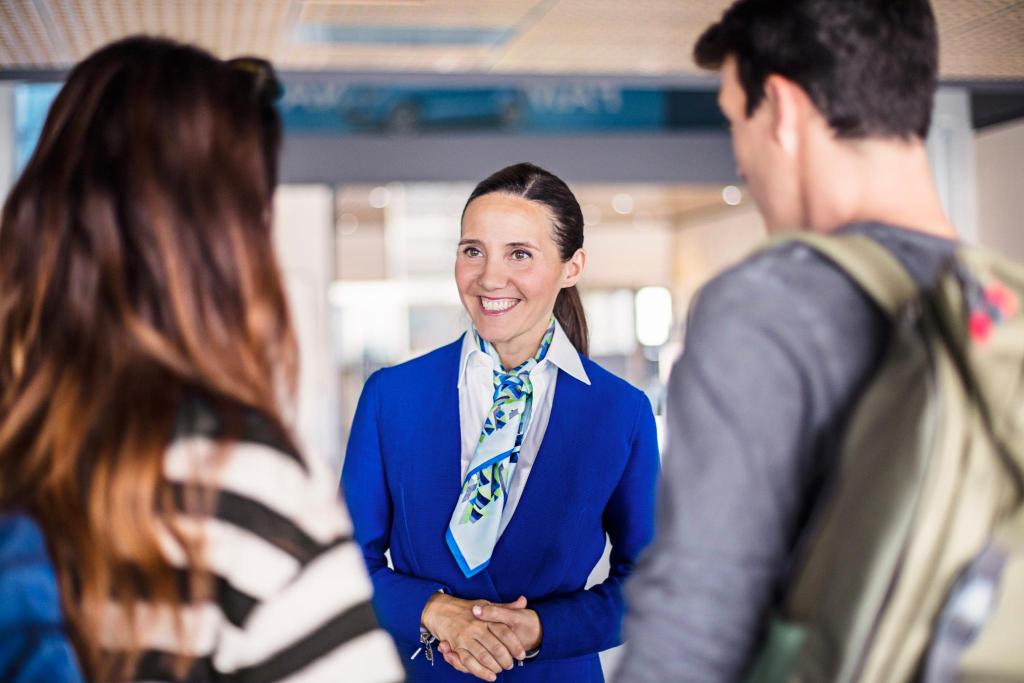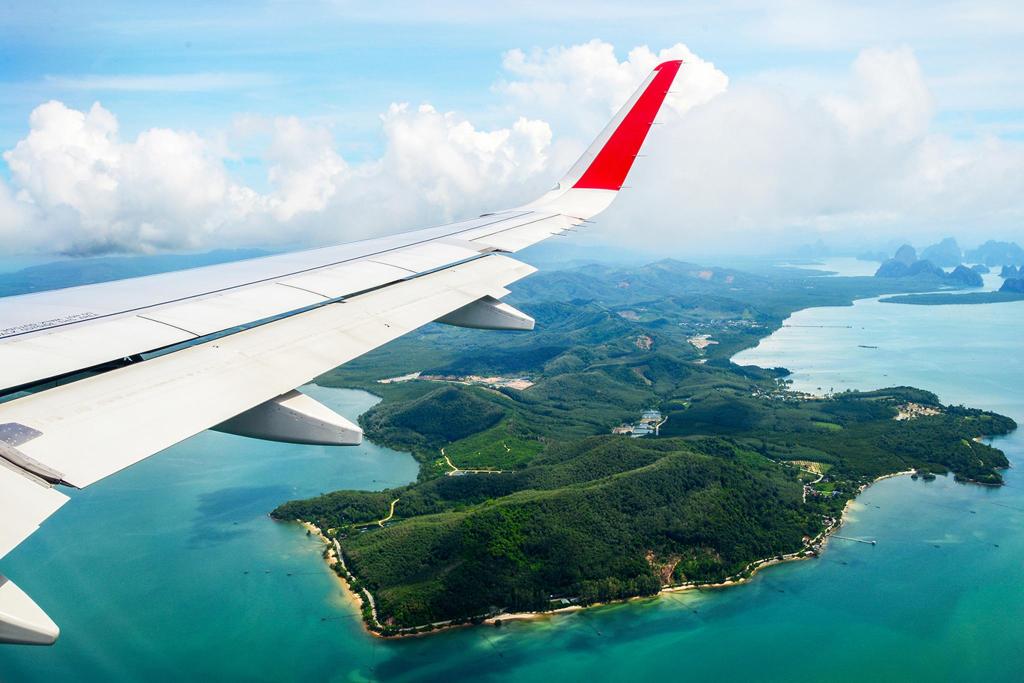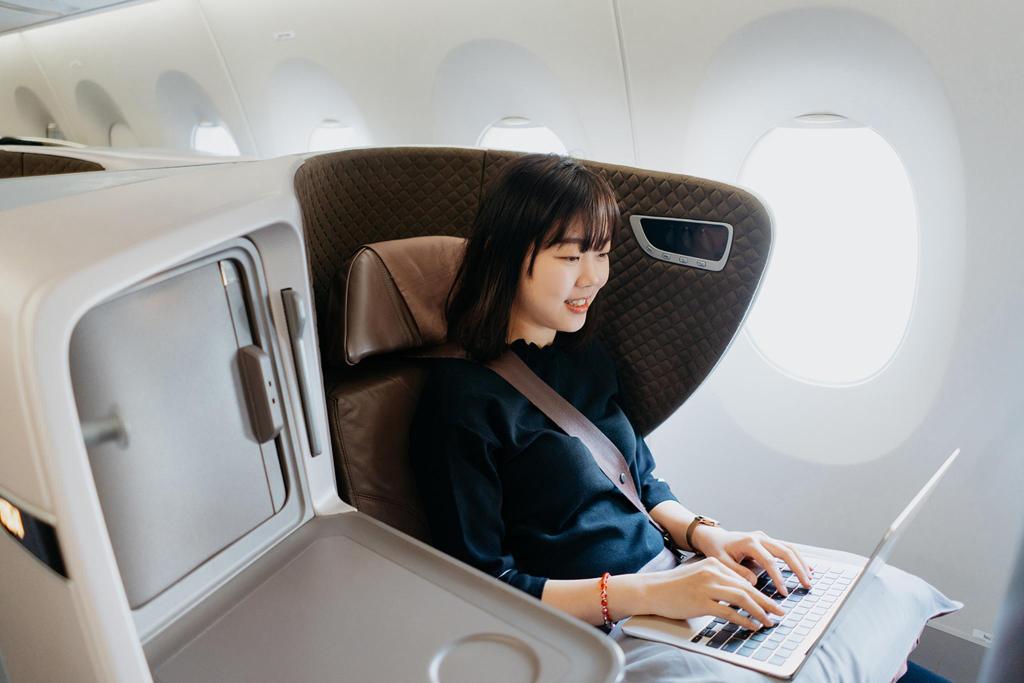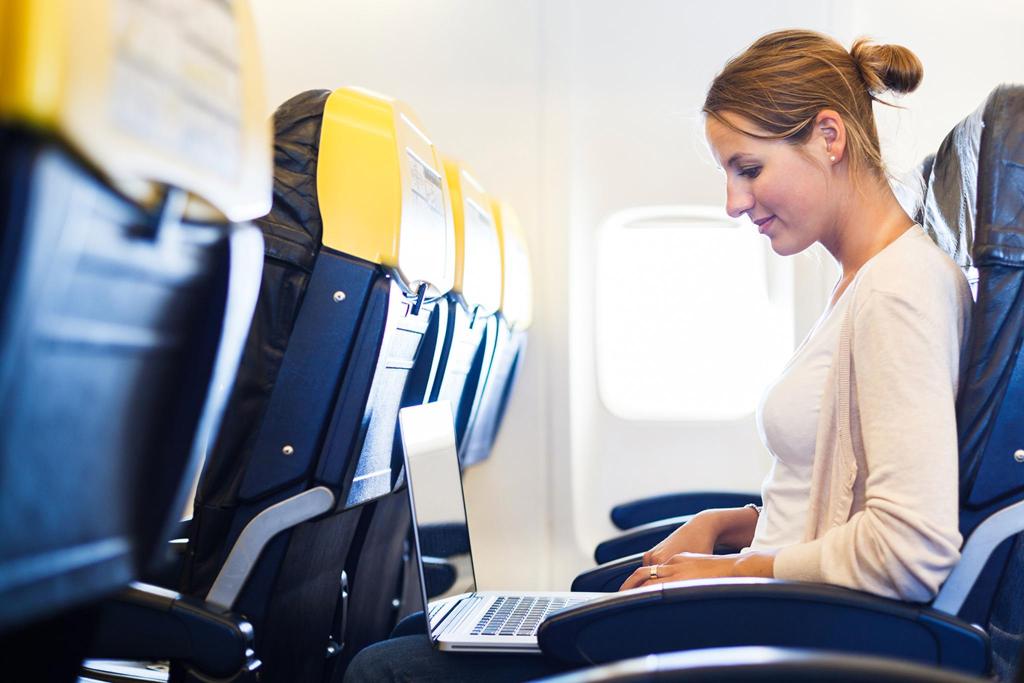
The Future of Air Travel: 8 Trends to Watch Out For
Soar into the exciting world of future air travel with our curated list of 8 must-watch trends. Explore cutting-edge technologies and visionary concepts that will make your flights faster, greener and more luxurious than ever before.
Get ready to take off into the exciting world of future air travel! If you're a travel enthusiast, you'll be thrilled to know what's on the horizon. From high-tech gadgets to eco-friendly innovations, the aviation industry is embarking on some major transformations. Understanding these upcoming trends will help you prepare for a whole new flying experience.
Passengers can expect faster boarding, baggage tracking, high-speed Wi-Fi and enhanced connectivity throughout the aircraft. Airports are increasingly becoming smarter– using intelligent systems for increased safety and efficiency. But what exactly can we expect in the coming years? And how will these changes impact our travel experiences?
Check out our ultimate list of 8 air travel trends that are sure to reshape your travel experiences.
Trend 1: the passenger experience

If you've ever dreaded the airport or a long flight, buckle up because the passenger experience will undergo significant transformations. When surveyed, travelers want to be more empowered throughout their journey, from the moment of booking to the in-flight entertainment. Airlines and airports will focus more on creating seamless, personalized experiences that begin long before travelers step onto the plane. Here's what to expect:
Personalized travel experiences
One key trend in improving the passenger experience is hyper-personalization. Airlines are using data and AI to tailor services to individual preferences.
These include:
- Customized in-flight entertainment recommendations.
- Personalized meal options based on dietary restrictions and preferences.
- Targeted promotions, ads and loyalty rewards.
- More ambient control (of seat, air, lights).
- More mobile interaction (your smartphone will become your digital travel agent and ticket).
Seamless airport processes
An improved passenger experience includes a seamless airport process. Airlines and airports know the frustrations of long lines and delays,, so they’re all working toward using innovative technology to streamline airport procedures, reduce wait times and minimize passengers' stress.
These include:
- Biometric check-ins (face recognition and/or fingerprint)
- Automated security screenings
- Smart baggage tracking systems (GPS trackers and RFID)
Enhanced in-flight comfort
What if you could get a massage during your flight? Aircraft interiors are evolving to prioritize passenger comfort and well-being.
- Smart seats: adjustable seating with built-in massage and temperature control
- Mood lighting: LED systems that mimic natural light cycles to reduce jet lag
- Air quality: advanced air filtration systems for cleaner cabin air
Immersive experiences with virtual and augmented reality
VR and AR are being integrated into the travel experience, offering wearables that:
- Show virtual tours of destinations
- Features interactive safety demonstrations
- Augmented reality wayfinding in airports
Trend 2: sustainable aviation technologies

Sustainable aviation is at the forefront of innovation and the future of air travel. Responsible for 2.5% of global carbon emissions, the aviation industry is under increased pressure to reach zero. Sustainable advancements aim to reduce the environmental impact of flying while improving efficiency and performance. Less fuel, less pollution, more travel while saving the planet! Many airports are already green. Denver International Airport (DEN) isone of thetop green, sustainable airports in the US, using one of the world’s largest solar power systems. Changi Airport in Singapore showcases a giant greenhouse with the world’s highest indoor waterfall and Dubai International Airport has added electric cars to its ground transportation.
Here are a few advancements to sustainability in the friendly skies.
Electric and hybrid-electric aircraft
Electric and hybrid-electric aircrafts are revolutionizing the future of aviation. Several companies are developing battery-powered aircraft for short-distance flights, promising quieter and cleaner air travel.
These eco-friendly alternatives to traditional fuel-powered planes offer:
- Reduced carbon emissions
- Lower operating costs
- Quieter operations
Solar-powered aircraft advancements
Solar-powered aircrafts are pushing the boundaries of sustainable flights.
- Increased flight duration
- Zero emissions during operation
- Potential for high-altitude and long-endurance missions
Hydrogen-powered planes
Hydrogen fuel cells are emerging in aviation technology. Major aircraft manufacturers are investing heavily in hydrogen propulsion systems and prototypes are expected to take flight in the next couple of years.
- High energy density
- The only byproduct is water vapor
- Potential for long-range flights
Sustainable Aviation Fuels (SAF)
Airlines are going green and sustainable fuel is leading the charge. Made from renewable sources and agricultural residues, SAF could significantly reduce aviation's carbon footprint.
- Made from renewable sources
- Can reduce carbon emissions by up to 80%
- Compatible with existing aircraft and infrastructure for easy transition
AI route planning
Machine learning and AI helps airlines set more efficient flight paths, minimize fuel consumption and reduce delays. These technologies analyze real-time wind speed, temperature and weather patterns, cutting emissions and decreasing fly time.
Trend 3: Advanced Air Mobility

Advanced Air Mobility (AAM) stands out as a revolutionary concept that promises to transform how we move through the skies and space. It’ll take some getting used to, but AAM will change the entire travel landscape using various innovative technologies and modes of transportation that will redefine the boundaries of aviation. As the evolution of humans exists, so does the evolution of transportation. Think 'Back to the Future' and flying cars.
Urban Air Mobility
With population inflation comes a rise in traffic. The solution? Urban Air Mobility (UAM). For decades, people have been sold on the concept of personal aerial vehicles to alleviate ground transportation and free up the roads. However, private jets and planes are not an affordable option. UAM is a safe and efficient aviation transportation system that uses aircraft to operate and transport passengers at lower altitudes (like helicopters) within urban and suburban areas. Think of it as rideshares in the air.
Supersonic and hypersonic travel
We have bullet trains and fast cars, but nothing like what's coming. One of the most exciting prospects in future air travel is the development of hypersonic and suborbital flights. These ultra-fast transportation methods could dramatically reduce travel times and fuel for long-distance journeys.
- Hypersonic aircraft: capable of flying at speeds exceeding 5 March (five times the speed of sound).
- Suborbital flights: briefly entering space before re-entering the atmosphere, potentially cutting intercontinental travel times to under an hour.
- Potential for trans-Atlantic flights in under 3 hours.
Autonomous passenger drones
Autonomous passenger drones, also known as electric vertical takeoff and landing (eVTOL) aircraft, are set to revolutionize short-distance travel:
- Zero-emission, electric-powered flight
- Capacity for 2-6 passengers
- Autonomous operation reduces the need for pilots (autopilot)
Urban Air Taxis
Urban Air Mobility (UAM) will alleviate traffic congestion in cities worldwide. Think of it like Uber in the air:
- On-demand air transportation within cities and suburbs
- Integration with existing public transport systems
- Reduced travel times for commuters
- Potential for emergency medical services and rapid response
Trend 4: artificial intelligence in aviation

AI is everywhere, so it’s only natural that new aviation technology includes it. Its impact is far-reaching, touching every aspect of flying, from ground operations to in-flight experiences. Here is how AI will change the future of air travel.
Autonomous airport operations
AI is revolutionizing airport operations, streamlining processes and enhancing efficiency. Autonomous vehicles, kiosks and robots are being deployed for tasks such as:
- Baggage handling
- Security screenings
- Cleaning and maintenance
- Passenger assistance
These AI-powered systems significantly reduce human error, improve speed and enhance overall airport efficiency.
Personalized passenger experiences
AI is taking personalization to new heights in air travel. By analyzing data, airlines can offer:
- Tailored flight recommendations
- Customized in-flight entertainment
- Personalized meal options
- Proactive customer service
Predictive maintenance safety
One of the most crucial applications of AI in aviation is predictive maintenance. By analyzing real-time data from aircraft sensors, AI can:
- Predict potential equipment failures
- Schedule maintenance proactively
- Reduce unplanned downtime
- Enhance overall safety
AI-powered flight management systems
AI is transforming flight operations through advanced flight management systems. These systems will lead to safer, more efficient and more personalized air travel experiences.
- Optimize flight routes for fuel efficiency
- Predict and avoid turbulence
- Assist pilots in decision-making during critical situations
Trend 5: biometric and contactless technologies

Forget fumbling for your passport and boarding pass. Facial recognition and fingerprint scanners will make your airport experience smoother than ever. Just smile for the camera and you're good to go! Biometric and contactless technologies will revolutionize the passenger experience. These innovations promise to streamline processes, enhance security and reduce physical contact points throughout the journey, which means faster lines and fewer germs.
Biometric boarding processes
Biometric boarding is becoming increasingly prevalent, offering a seamless and efficient way to board aircraft. These technologies will speed up the boarding process, significantly reduce the risk of fraud and human error and offer a more hygienic travel experience.
Here's how it's changing the game:
- Facial recognition replaces traditional boarding passes
- Fingerprint scanners expedite identity verification
- Eye scanning provides an additional layer of security
Digital health passports
In the wake of global health concerns, digital health passports are emerging as crucial tools. These passports will include vaccination records, test records and travel history to ensure that passengers meet health and safety requirements without needing physical documentation.
Touchless security screenings
Contactless security screening technologies are transforming one of the most time-consuming aspects of air travel. These innovations maintain high-security standards while minimizing physical contact and reducing wait times.
- Advanced body scanners that don't require physical pat-downs
- AI-powered baggage screening systems
- Contactless explosive detection devices
Facial recognition check-ins
Facial recognition technology will replace traditional check-in processes to enhance security and significantly reduce check-in times, allowing passengers to move through airports more efficiently.
- Automated kiosks use facial scans to identify passengers
- Mobile apps allow for at-home check-ins using selfies
- Seamless integration with airport security and boarding systems
Trend 6: new aircraft design

If you’ve ever been the last person to de-board a plane, you will love some new advancements heading toward plane design (like two main doors!) Over the last century, airplanes have evolved to some degree, with cabin design and layout remaining the same. However, as we look towards the future of air travel, aircraft design is one of the most exciting areas in the evolution of air travel. These new models promise to transform the flying experience, improve efficiency and reduce environmental impact.
Cabin redesigns for enhanced comfort
Airlines are reimagining cabin layouts to maximize passenger comfort and space utilization. Aircrafts of 2025 and beyond will be designed around speed and efficiency of boarding, disembarkation and turnaround.
Some innovative concepts include:
- Modular seating arrangements
- Ergonomic seats with flexibility
- Convertible spaces for work and relaxation
- Improved lighting and air quality systems
- Flexible zones (families, business, cargo)
- Double-boarding (front and back) doors to improve efficiency
Noise reduction innovations
Engineers are developing cutting-edge technologies to minimize aircraft noise inside the cabin and for communities near airports.
- Advanced sound-absorbing materials
- Active noise control systems
- Redesigned engine nacelles for quieter operation
Morphing wing technology
Adaptive wing designs will improve aerodynamics and fuel efficiency.
- Shape-changing wings that adjust to flight conditions
- Seamless control surfaces for reduced drag
- Smart materials that respond to temperature and pressure changes
Blended wing body aircraft
The blended wing body concept represents a radical departure from traditional tube-and-wing designs. Blended wing design will:
- Improve fuel efficiency due to reduced drag
- Increase cargo and passenger capacity
- Offer quieter operations
Trend 7: enhanced connectivity and entertainment

Bored of tiny seatback screens? Passengers agree that entertainment on a plane is key to a successful flight. One area that promises significant advancements is in-flight connectivity and entertainment. All airlines will improve their Wi-Fi systems for high-speed streaming and surfing, while airports are increasing gate-to-gate entertainment. But let's explore some exciting developments passengers can expect in the coming years.
Real-time language translation services
Real-time language translation services will revolutionize international travel. These systems will break down language barriers, allowing passengers to communicate effortlessly with crew members and fellow travelers.
- Instant voice-to-voice translation
- Text translation for in-flight menus and safety instructions
- Cultural context awareness for more accurate translations
Personalized entertainment systems
Gone are the days of limited movie selections. Future in-flight entertainment systems will offer highly personalized experiences with:
- AI-powered content recommendations based on individual preferences
- Seamless integration with personal devices with Bluetooth
- Interactive games and virtual social spaces
Virtual and augmented reality experiences
Virtual reality headsets could transform your in-flight entertainment experience, letting you catch the latest blockbuster in a virtual cinema or even take a virtual tour of your destination. VR effectively shows flight safety instructions, offers interactive destination tours, has virtual windows and showcases immersive movies and educational content as well.
High-speed in-flight Wi-Fi
Most airlines will offer at least two tiers of connectivity – a free basic product and a higher-speed paid-for product if they’re not already doing so. High-speed, reliable in-flight Wi-Fi will become the norm, enabling passengers to:
- Stream high-quality video content
- Conduct video conferences
- Access cloud-based work environments
- Stay connected on social media platforms
These enhanced connectivity and entertainment features will make flights more enjoyable and more productive for those who wish to work during their journey.
Trend 8: climate-resilient aviation infrastructure

With climate change's increasing impact on global weather patterns, the aviation industry must adapt to ensure safe and efficient operations. Here's what we know so far:
Resilient air traffic management systems
Air traffic management systems are evolving to become more resilient in extreme weather events. These advanced systems utilize real-time data and predictive algorithms to:
- Optimize flight routes based on weather conditions
- Reduce delays and fuel consumption
- Enhance overall safety and efficiency
Sustainable airport design
Airports of the future will be designed with sustainability and resilience in mind.
Key features include:
- Green building materials and energy-efficient structures
- Rainwater harvesting and recycling systems
- Renewable energy sources (solar panels and wind turbines)
Weather-adaptive airports
Future airports will be redesigned to adapt to changing weather patterns and extreme events. The aviation industry is taking significant steps to ensure sustainability and adaptability to environmental challenges.
These include:
- Flood-resistant runways and taxiways
- Enhanced drainage systems
- Heat-resistant materials for infrastructure
- Flexible operational procedures to handle various weather scenarios
FAQs
Will air travel get cheaper in the future?
The future of air travel pricing is complex. In 2025, air travel is expected to stay about the same, but various factors can change costs in the upcoming years. Factors include technological advancements that will improve fuel efficiency and reduce operational costs. Economic factors like fuel prices, inflation and global economic conditions will continue to impact ticket prices. Market competition, especially from new players in advanced air mobility, could drive prices down. However, sustainable technologies might increase prices initially but offer valuable savings in the future. Tip: Book your flights in advance for lower ticket prices. Fares typically rise closer to the travel date.
How will air travel be greener in the future?
The aviation industry is actively pursuing several initiatives to become greener and more environmentally friendly. Some strategies that are already in place are:
- Sustainable Aviation Fuels (SAFs)
- Electric and hydrogen-powered aircraft
- More efficient aircraft designs
- Improved air traffic management systems
- Carbon offsetting programs
- More recycling initiatives in airports
What do future air travelers want?
Most travelers want to get from point A to point B fast, efficiently and comfortably. Airlines are listening to their guests' needs and making changes to enhance the passenger experience. Passengers are likely to prioritize the following:
- Seamless, contactless experiences
- Personalized services
- Enhanced in-flight connectivity and entertainment
- Sustainable travel options
- Flexible booking and cancellation policies
- Improved health and safety measures
As we look towards the future, it's clear that the aviation industry is on the brink of a remarkable transformation driven by innovative technologies and sustainability. Airlines and airports will embrace change to meet evolving passenger needs and address global challenges. From enhanced passenger experiences to climate-resilient infrastructure and cutting-edge tech, the future of air travel will seamlessly blend all new trends to make air travel faster, more efficient, more comfortable and more accessible than ever before!

- Tipy týkající se letů
- Cestování obecně
- Pohostinství
- Wellness
- Cestovní podmínky
 A Parent’s Guide for Flying With a Baby28. března 2025
A Parent’s Guide for Flying With a Baby28. března 2025 The Best Apps for Planning Air Travel28. března 2025
The Best Apps for Planning Air Travel28. března 2025 How to Secure Checked Luggage When Flying20. února 2025
How to Secure Checked Luggage When Flying20. února 2025 How to Stay Safe When Traveling Solo17. února 2025
How to Stay Safe When Traveling Solo17. února 2025 What to Wear on a Long-Haul Flight25. prosince 2024
What to Wear on a Long-Haul Flight25. prosince 2024 Why Do You Have to Turn on Airplane Mode When Flying?23. prosince 2024
Why Do You Have to Turn on Airplane Mode When Flying?23. prosince 2024 The Ultimate Weekend Trip Packing List20. prosince 2024
The Ultimate Weekend Trip Packing List20. prosince 2024 Checked Baggage Rules for Flying14. prosince 2024
Checked Baggage Rules for Flying14. prosince 2024 How to Pack a Suitcase Like a Pro6. prosince 2024
How to Pack a Suitcase Like a Pro6. prosince 2024 The Complete Guide for US Airline Baggage Limits24. července 2024
The Complete Guide for US Airline Baggage Limits24. července 2024 Your Go-to Guide to Checking in at the Airport24. července 2024
Your Go-to Guide to Checking in at the Airport24. července 2024
Mohlo by se vám také líbit
Learn essential airplane etiquette with our guide to the dos and don'ts of flying. Master plane manners, armrest rules and more for a smooth journey.
Do you need a passport to fly to Alaska? Explore everything you need to know about flying to Alaska, including which airlines fly from the US and more.
Have spare $50,000 to burn? Here are the world’s most expensive plane tickets you can buy and a glimpse at what you get for your money.
Our travel experts share which airlines have incredible business-class seats and how they compare.
Stay productive with these expert business travel tips: maximize comfort, utilize onboard amenities, and optimize your travel time for efficiency.
Discover essential airplane hacks from seasoned travelers. Save time, money and stay comfortable with these expert tips for a smoother flight.








